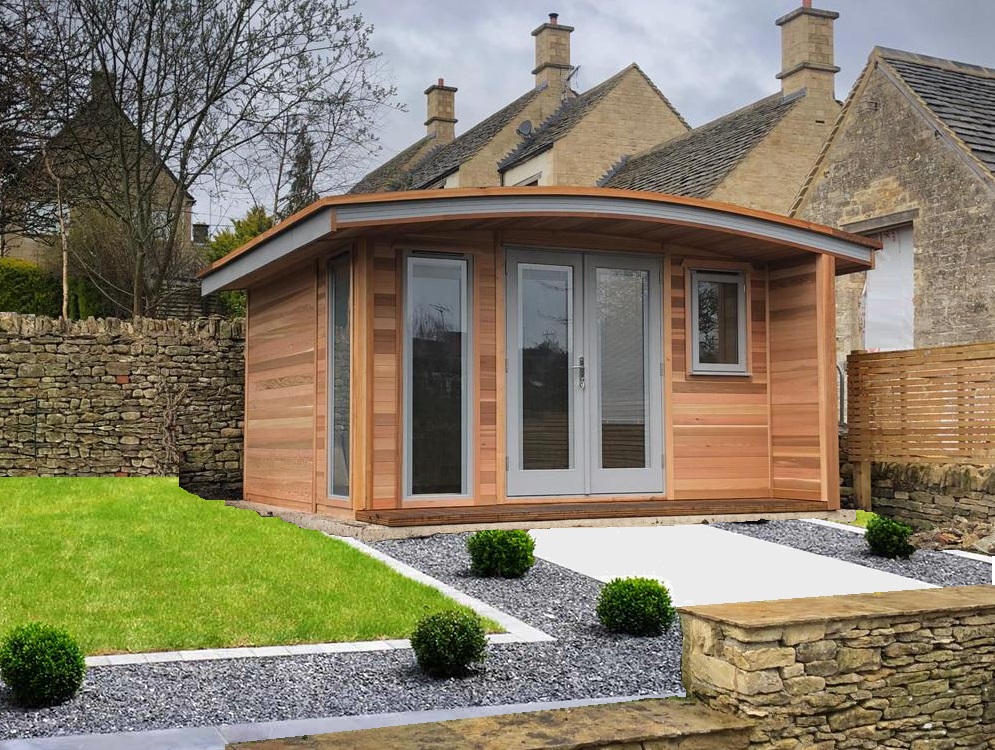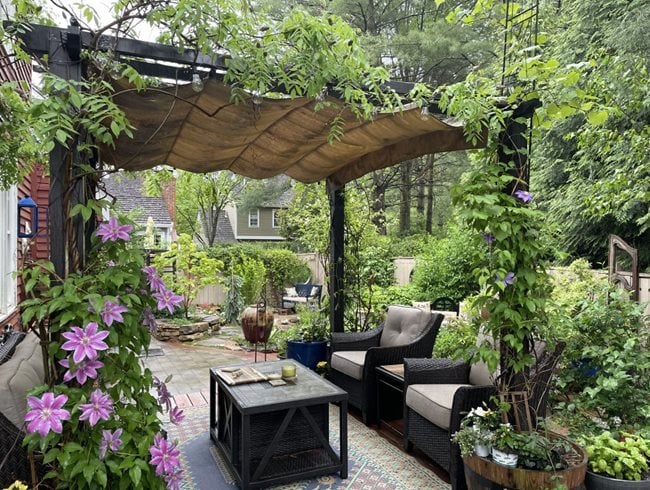Handy Ideas On Planning Permission On Garden Conservatories
Handy Ideas On Planning Permission On Garden Conservatories
Blog Article
What Size Restrictions Do You Have For Your Gardens, Rooms Or Other Spaces.?
Specific size restrictions are often utilized to determine if you require planning permission prior to making garden rooms, conservatories or outhouses. Here's the criteria for size that may require you to seek planning permission.
If the outbuilding is detached, planning permission is generally required if the total area of the proposed construction, along with any other existing outbuildings, exceeds 50% of the total area of the land around the house (excluding the area of the house's footprint).
Height Restrictions
Single-story structures. The eaves' maximum height can't be more than 2.5 meters.
The maximum height of buildings within 2 meters is 2.5 meters.
Floor Area:
The building code may still be required for buildings bigger than 30 square metres, even though planning permission isn't required.
Proximity to Boundaries
If the structure exceeds 2.5 meters high and is within 2 meters of a line, then the building permit will be required.
Building Usage
While not strictly a size restriction, the intended purpose of the garden will determine whether planning permission is required. Planning permission could be required when, for example the structure is designed to be used as a commercial or residential space.
Permitted Development Rights:
Under Permitted Development Rights (which permit for some types of work without the need for a complete application), specific size limits and conditions are in place. These rights are different depending on the property's type that is located in an area of conservation or is subject to other restrictions.
Conservatories & Extensions
The maximum depth for an extension of one story is typically 4 metres in detached houses and 3 meters for semi-detached homes or terraced houses. These can be extended to 8 and 6 meters, as per the Neighbour Consultation Scheme, subject to a few conditions.
The height limit for an extension to the rear with a single story is 4 meters.
Side Extensions
For side extensions the maximum width is half the size of the home's width, and the height can't exceed 4 meters.
Restrictions on Volume:
In certain areas (such as conservation areas and Areas of Outstanding Natural Beauty), an additional construction that increases the size of the house in excess of 10 percent or 50 cubic meters (whichever is larger) could require planning permission.
Front Extensions
Extensions that extend past the front of the house that faces the road may need planning permission.
It is important to check with your local planning authority since the rules may differ depending on the local council or the property's condition. In addition, even when planning permission isn't needed the building regulations approval could still be necessary for structural and safety motives. View the top rated heater for summerhouse for site tips including out house for garden, best heater for log cabin, garden room heater, garden buildings , garden rooms hertfordshire, costco outbuildings, how to get power to a garden room, garden room planning permission, ground screws vs concrete base, garden rooms brookmans park and more.
What Kind Of Planning Permission Do You Require To Build An Outdoor Space, For Instance?
The neighbor's concerns could be a significant element in determining whether or not permission to plan will be required to build a garden room, conservatory, outhouse, garden office or extension. Here are some important aspects to consider privacy and overlooking:
If the building will be viewed from afar, resulting in a loss of privacy, a planning permit is likely to be required. It will guarantee that the structure won't negatively impact the lives of residents within the vicinity.
Loss of Light, Overshadowing
Planning permission may be needed when a building project is likely cause an overshadowing of adjacent homes or a substantial loss of lighting. Local planning authorities consider the impact sunlight and day light can have on the homes around it.
Disturbance and Noise:
The planning permission is needed to use the garden or extension when there is a lot of noise (such an office at home with clients or a workshop. It ensures the noise levels are acceptable and will not disturb the surrounding area.
Visual Impact and Character
The shape, size, and appearance of the building must be in line with the aesthetics of the neighborhood. Planning approval ensures that the new development is aesthetic and does not harm the area's aesthetic.
Boundary Proximity
If the structure is taller than 2.5 meters and are located within 2 meters of the property line Then planning permission is required. The reason behind this is to handle potential disputes, and also to protect neighbors' properties.
Shared Access and Rights of Way:
The planning permission is needed if the construction is likely to alter the shared access points or right of ways. This will ensure that they do not get affected or obstructed.
Oppositions by Neighbors
Residents who live nearby are entitled to be consulted on planning applications. Planning authorities will take into account objections raised by neighbors when deciding the decision to approve.
Effect on the Value of Property:
Although it's not always the main factor, significant changes to homes that could affect their property values may affect the necessity of a permit. Local authorities will take into account the impact of these changes when making decision.
Covenants and Deed Restrictions:
There could be covenants or restrictions on the property, which must be followed regardless of the approval for planning. These agreements may limit what can be constructed, affecting neighborhood harmony.
Construction Disturbance:
A planning permit may deal with concerns about disruptions that is caused by construction including noise, dust or traffic. It could be necessary to establish conditions to limit the impact on neighboring properties.
Impact of Infrastructure
If the proposed structure places more strain on infrastructure in the area (e.g. drainage parking, roads) Planning permits should ensure that these impacts are analyzed and managed accordingly.
Community Consultation
In some instances there are occasions when a larger community consultation process could be necessary, particularly for more complex or controversial developments. This allows for a more democratic method of decision-making that takes into account local views.
In summary, concerns about the neighborhood are important in deciding if an extension, garden room, outhouse, garden office or extension is allowed. In order to avoid a negative impact on living conditions or privacy levels, as well as lighting levels within the neighborhood, it is essential that any proposed construction doesn't adversely impact them. Talking with the local planning authority and engaging with neighbors early in the process of planning could assist in addressing these issues and help facilitate a smoother approval process. Take a look at the recommended costco summer houses for blog tips including outhouse, herts garden rooms, outhouses for garden, luxury outhouse, garden office electrics, best electric heater for cabin, garden room vs extension, garden room or extension, garden office electrics, garden room and more.
What Kind Of Planning Permission Is Needed For Gardens, Rooms, Etc. In Terms Of Location Restrictions?
The location of garden rooms or conservatories, along with outhouses, office buildings, and garden offices can be a major factor in determining if planning permission is required. Here are the most important location requirements to consider.
Buildings within 2 metres of the property line cannot exceed 2.5 meters in height. If the building height exceeds that limit, then planning permission is required.
Front of the Property
Permitted development rights usually don't permit forward extensions or construction in front the principal elevation.
Part of the Property:
Side extensions can be restricted by height and width restrictions, and may require planning permission when they are extended beyond the existing side wall.
Rear of Property
Size and height restrictions are applicable to rear extensions, which includes garden rooms. The planning permission must be obtained if these extensions are in excess of the permissible development boundaries.
Designated Zones
In areas of outstanding natural beauty (AONB), National Parks and World Heritage Sites there are stricter controls. Planning permits may be required for any new structure regardless of how big.
List Buildings
Properties that are listed as a building is subject to strict regulations. No matter where the structure is located on your property, you'll require planning permission and listed building consent to make any changes or extensions.
Green Belt Land:
In order to maintain open spaces, it's extremely difficult to construct on greenbelts. A special permit is typically needed for any new construction or changes.
Flood-prone areas:
If the property has an elevated risk of flooding, then there are extra regulations which apply. This is to ensure that the new construction does not increase the flood risk. Planning permission and possibly an assessment of flood risk could be required.
Urban vs. Rural settings
In urban areas, rules differ from those found in rural regions. Rural properties can be more relaxed about limitations, for example the size and location of outbuildings.
Highways and Public Rights of Way
Planning permission is required if the structure is near highways, public rights-of-way, or roads to ensure that it doesn't hinder safety, views, or restrict access.
Shared Ownership and Leasehold Land
If you own a property which are part or leasehold or shared ownership plans it is possible to get additional permissions, or from the entity managing or freeholder or planning permission in accordance with the local rules.
Adjacent to Other Structures
The planning permission must be obtained when the new structure will be built next to an existing structure or structure, particularly ones located on adjacent properties. This is to ensure that there are no adverse effects on the land or buildings nearby.
It is recommended to always contact your local planning authority for advice specific to your property and its location. The regulations vary widely based on local regulations. Compliance with all relevant restrictions will help you avoid legal issues and potential fines. Follow the top rated do you need planning permission for garden room for blog examples including garden rooms near me, outhouse builders, composite garden office, garden buildings , garden rooms near me, outhouse buildings, garden outhouse, garden rooms in St Albans, garden room planning permission, garden rooms near me and more.